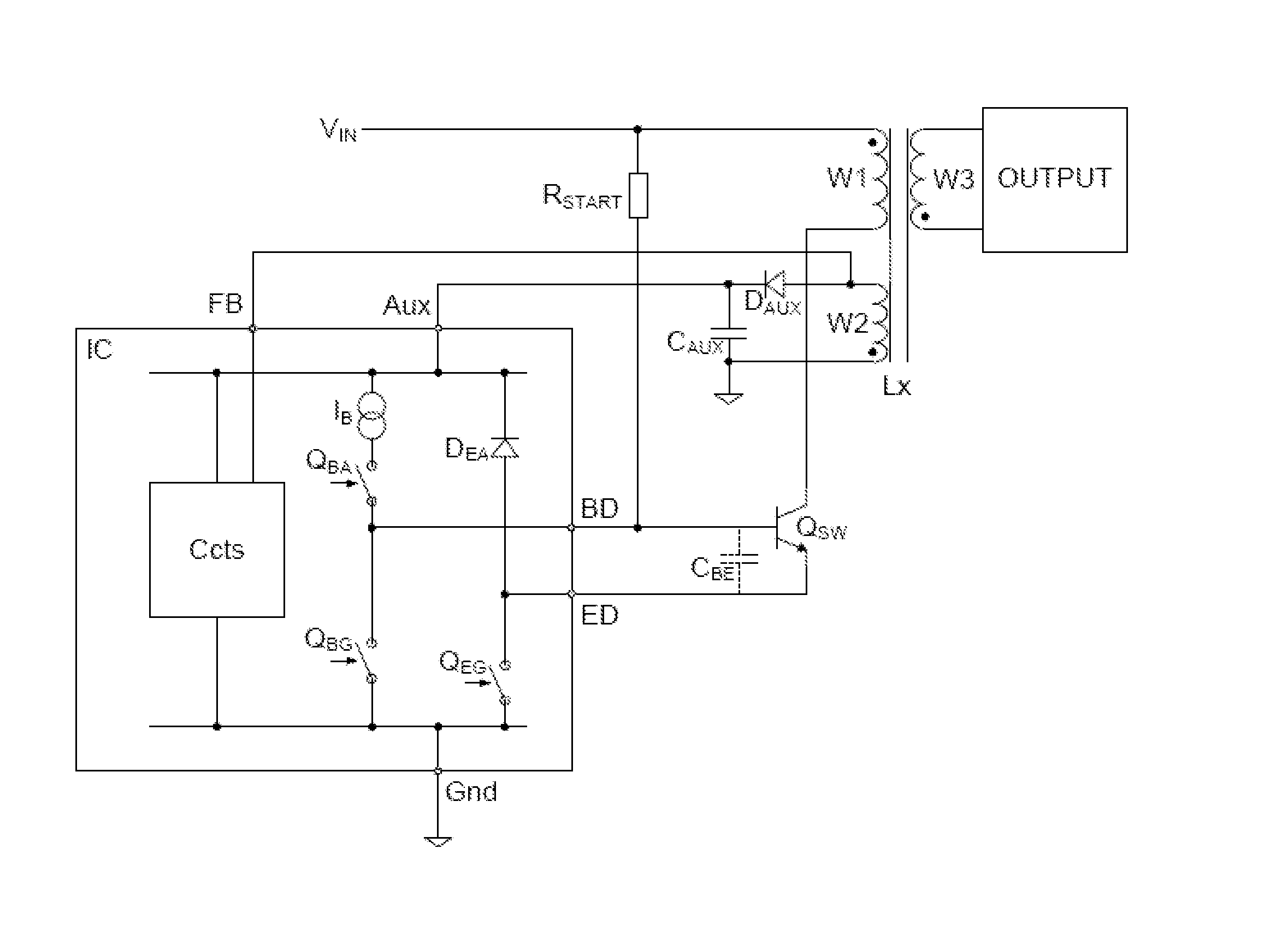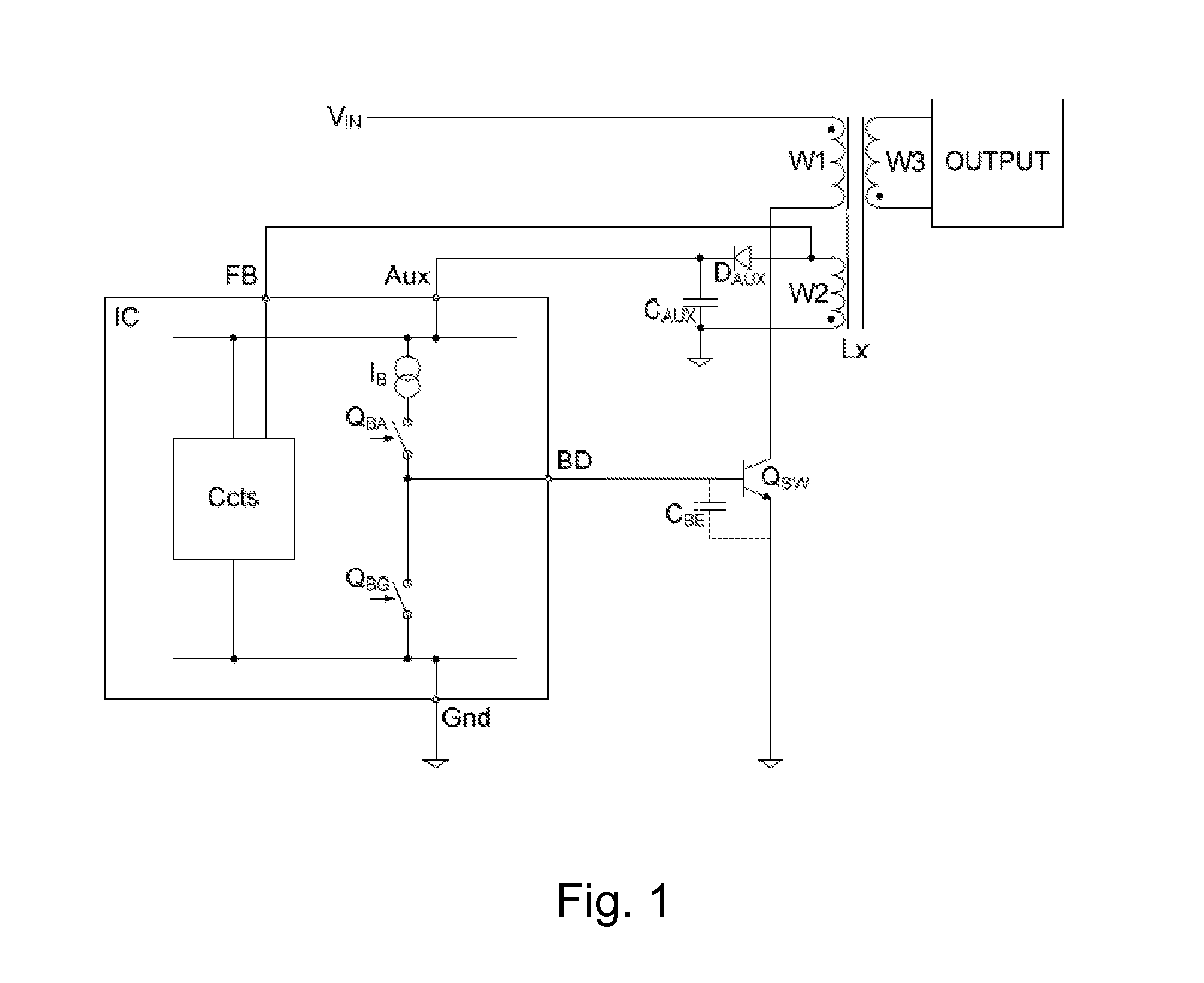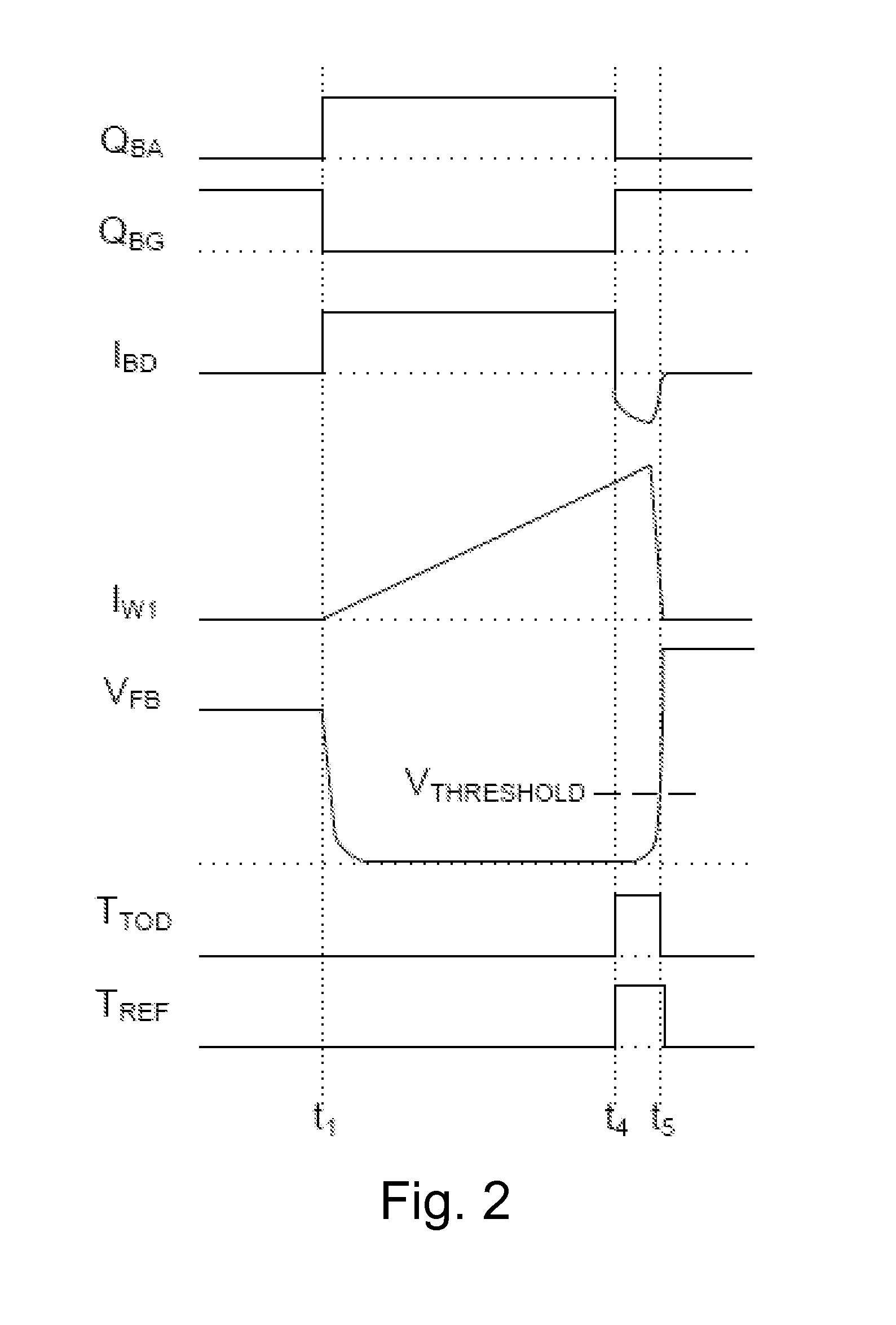Storage time control
a technology of storage time and control, applied in the direction of electric variable regulation, process and machine control, instruments, etc., can solve the problems of increased power waste, device damage, energy loss, etc., and achieve the effect of fast turn-on of power switching devices and high first amplitud
- Summary
- Abstract
- Description
- Claims
- Application Information
AI Technical Summary
Benefits of technology
Problems solved by technology
Method used
Image
Examples
Embodiment Construction
[0107]Embodiments provide a number of improvements to bipolar transistor drive for low cost SMPCs. For example, a wide range of transistors may be driven optimally by regulating their turn-off delay time, generally comprising a charge storage time. This is performed in an embodiment using a reliable, low cost approach that requires minimal, preferably no, additional parts for a primary side-sensing flyback converter.
[0108]One embodiment is shown in FIG. 1, with example waveforms in FIG. 2. The offline switched mode power converter may be of any type, for example flyback, boost or forward converter, and is shown here as a single-ended flyback design. The inductive component Lx illustrated in FIG. 1 is a coupled inductor having windings W1 (input, primary winding), W3 (output, secondary winding) and further winding W2 (preferably a sensing signal source in the form of, e.g., an auxiliary or sense winding). However alternative inductive components Lx may be employed, depending on the c...
PUM
 Login to View More
Login to View More Abstract
Description
Claims
Application Information
 Login to View More
Login to View More - R&D
- Intellectual Property
- Life Sciences
- Materials
- Tech Scout
- Unparalleled Data Quality
- Higher Quality Content
- 60% Fewer Hallucinations
Browse by: Latest US Patents, China's latest patents, Technical Efficacy Thesaurus, Application Domain, Technology Topic, Popular Technical Reports.
© 2025 PatSnap. All rights reserved.Legal|Privacy policy|Modern Slavery Act Transparency Statement|Sitemap|About US| Contact US: help@patsnap.com



